Hippolyte Charles Napoléon Mortier, the Duke of Trévise
As you read this, you will have noticed that we often mention one artist in particular: Hippolyte Charles Napoleon Mortier de Trevise (link in French).
We would like to introduce you to this man's work in more detail, because thanks to his drawings and watercolours, we have iconographic documents that served as a starting point for our project.
The 105 watercolours and drawings of Hippolyte Charles Napoléon Mortier, Marquis, then Duke of Trévise (the third) after the death of his father in 1869, are preserved in the Departmental Archives of Reunion Island, in an attractive cardboard album-file, referenced 40 Fi.
This corpus of productions has been digitised by the Iconothèque Historique de l'Océan Indien, which has graciously made available to the team the drawings that interested us for this sewing and clothing reconstruction project. We would like to thank them very sincerely.

The man
Hippolyte was born on 4 May 1835 in Paris. His grandfather had been awarded the title of Duke of Treviso in 1808, under Napoleon I, for high feats of arms.
Hippolyte was the second child of Napoleon Mortier (1804-1869) - where we see that the name Napoleon is a recognition of acquired nobility.

His career is flattering: secretary of embassy under Napoleon III, he was a peer of France (link in French) and a senator.
On 23 October 1860, in Paris, he married the richly endowed daughter of Gabriel Le Coat de K/Véguen, a merchant-planter-industrialist from Reunion Island. The marriage had been arranged for a long time: it took place despite the unexpected disappearance of the father-in-law in March 1860. Hence the black costume of the young bride, Emma, on her mule in the watercolour below.
The watercolour opposite is one of a series of works produced at the time of Hippolyte's first trip in 1861, for his wedding trip.
On the far left on the stallion is the groom, and galloping proudly in front of the troop is Le Coat, from K/veguen, the brother-in-law. Emma is in black, seated in amazon on her mule, accompanied by a certain Gombault "with provisions".
The Mortiers made a first voyage to Reunion in 1860-1861, then a second in 1865-1866. The Peninsula & Oriental Steam Navigation Company served the Indian sea route, with a fleet of ships using the technical prowess of industrialisation, as Hippolyte C. N. Mortier.
It was during these two trips that the young husband produced these delightful, fresh watercolours. Watercolour is an artistic genre that developed a lot in the 19th century, under the English influence. It was an art form that was practised with relatively simple equipment and, above all, was easily transportable to distant lands and colonies, unlike oil painting, which required more equipment and more investment.






Cafrine

Bouchiana

Bouchiana

Bouchiana

Mr Bourraye in the barracks garden

The poor citizen's umbrella
Hippolyte's artistic talents did not prevent him from having a good business sense: he joined forces with his brother-in-law, Denis-André Le Coat de K/Véguen, to manage a veritable land empire that his father-in-law had built up in the south of the island: on the eve of his death, Gabriel de Ker/Véguen alone produced more than 10% of the island's total production in his 13 sugar factories.
The couple had no children.
They lived in Paris rather than on Reunion Island, in the immediate circle of the imperial couple until 1870.
The advent of the Third Republic removed the Duke of Treviso from the spheres of political power, but not necessarily from the circles of economic power.
The Duke of Trévise' spouse

Marie-Angèle Emma Le Coat de Ker/véguen, born in 1835 in Saint-Pierre, to Gabriel Le Coat de K/veguen, and to Anne-Marie Zacharine Chaulmet (1816-1836) his young wife.
We are very grateful to Omar Enis Rockel who entrusted this illustration to the Capeline team some time ago. Enis Rockel had the opportunity to visit the current heirs of the K/veguen family, who entrusted him with some documents and reproductions.

Emma, a young bride, on an excursion with her husband, Hippolyte Charles Napoléon Mortier, Marquis de Trévise.
The couple are on their honeymoon in Reunion Island, but Emma is in mourning: her father, Gabriel, died unexpectedly in March 1860, just before her wedding.
She had lost her mother in 1836. Hence the importance of the old Victorine, who was the girl's nanny
Outre la place important de sa famille sur le territoire de l'île de la Réunion, Emma occupe une place privilégiée auprès de l'Impératrice Eugénie de Montijo, auprès de laquelle elle a été introduite grâce à sa belle-soeur : la Marquise de Latour-Maubourg.
The Duke of Trévise' sister

The Marquise of Latour-Maubourg
The sister of Hippolyte C.N. Mortier, Marquis of Trévise in 1855, is called Anne-Eve Mortier de Trévise
Anne-Eve Mortier de Trévise was Marquise de Latour-Maubourg by her marriage in 1849 to César de Faÿ de Latour-Maubourg (link in French), an aristocrat of the imperial court, chamberlain to Emperor Napoleon III, for a time administrator of the Chemin de Fer Grand Central, and then regularly deputy of the Haute-Loire.
She was tall, with a pleasant face, had a lot of spirit, did not like the world or the toilet and was only happy in her home with her husband, the good César de la Tour Maubourg. The household was very close-knit. The Marquise de la Tour Maubourg was also cruelly tested. Her daughter, a charming young woman, who had married Count Pierre de Kergolay, died in childbirth a year after her marriage. Her son, Juste de la Tour Maubourg, who, as a young man, had joined the mobile army of the Haute-Loire at the beginning of the war, was killed in one of the first battles...
This painting is evidence of the wealth and privileged social position of the Mortier de Treviso family at that time.
The work of the 3rd Duke of Trévise
In the course of this article we have seen the very privileged position of the Mortier de Trévise family, but also of the de le Coat de Kervéguen family.
At that time, people with such high social status were encouraged to practice an artistic activity (music, poetry, painting, etc.). Given what has been described about the Duke of Treviso, it is not surprising that this man could draw and paint, but the subject of his work differs slightly from what was expected at the time.
Let us take the example of a person with a recognised artistic practice in the family of Le Coat de Kervéguen:
She is the wife of Denis-François le Coat de Kervéguen (link in French), who is none other than the half-brother of Gabriel Le Coat de Kervéguen (link in French) (Emma's father, mentioned earlier in this article, and therefore father-in-law of the Duke of Treviso). Are you all right? Do you still follow?)
Adèle Ferrand is known for her paintings, which you can discover on :
If you take a look at the available works of this lady, you will notice that her sketches and paintings represent scenes with themes that were common at the time, for a person born and living in the bourgeoisie in France. Although she lived on the island of Reunion, she drew very little of her surroundings in her daily life (or perhaps her sketches have unfortunately not reached us...?)
Unlike the Duke of Trévise, who took it upon himself to illustrate people, places, flora, events, etc. during his travels.
These illustrations are of particular interest to us because they allow us to reconstruct the lives of people from less bourgeois backgrounds, of whom we unfortunately have very few iconographic documents. Indeed, taking photographs at the time was reserved for people who could afford it, and paintings or watercolours of the period representing them are quite rare.
We have also found other artists with this vision, which we will gradually introduce to you as we continue our research and reconstructions. In the meantime, I suggest you go and admire the beauty of Reunion Island through the pencil of the Duke of Trévise.









